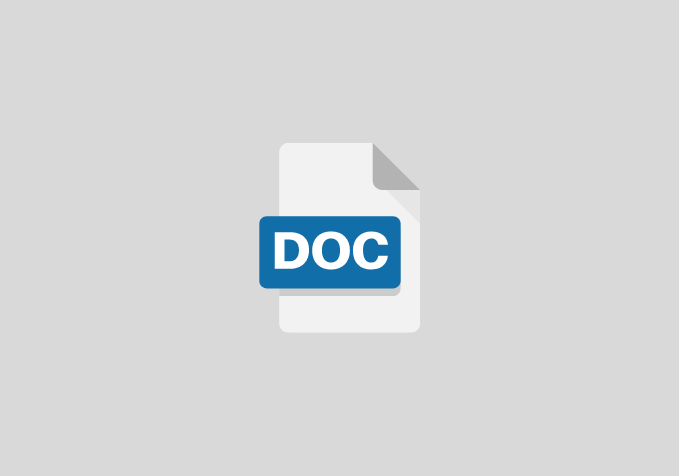A Proposal on Effect of Internal Control on Organizational Performance ( a Case Study of Ecobank Plc)
PURPOSE OF THE STUDY
The main purpose of the study is to find out the effect of internal control on the performance of Ecobank plc
OBJECTIVES OF THE STUDY
- To assess the level of internal control system in Ecobank plc
- To assess the level of performance at Ecobank plcy
- To assess the relationship between internal controls and performance at Ecobank plc
CHAPTER TWO
REVIEWED OF RELATED LITERATURE
INTRODUCTION
This section reviews the aspects and literature related to the topic of the study. Considerable amount of literature is to be carried out on internal control especially its effects on performance of organizations. It will cover the explanation of variables and the relationship between variables. However particular controls to be used by organizations depend on the nature, size, and volume of transactions, geographical coverage of the organization and ability of management to exercise such controls.
DEFINITION OF INTERNAL CONTROLS
Martin (1994), describes the internal control as including internal checks and internal auditing, it projects the whole system of controls to be applicable to sales, purchases, finance, cost, production and others. These controls operate in organization with the purpose of collaborating the organization in an orderly and efficient manner. They provide safety and security to assets, continuous checks on the day-to-day transactions.
Many people interpret internal control as the steps taken by the business to prevent employee fraud, that’s according to Meighs (1988).
Ramaswamy M, S (1994), defines internal control as the plan of the organization and all the methods and procedures adopted by the management to achieve its organizational goals.
Emiles Woolf (1992), defines internal control as the system of control, financial or otherwise established by the management in order to carry out business in an orderly and efficient manner, safeguard his assets and secure accurate records.
ISA (400) together with bent (2003) defines internal control as comprising of control environment and control procedures. They include all procedures adopted by management to assist in the achievement of objectives as far as practable.
Rosenburg (1983), defines internal control as those methods, procedures and measures employed to promote efficiency, encourage acceptance of managerial procedures and policies to check the validity of management and to protect assets.
Advertisements
According to Princeton (2008), internal control is a process effected by an organization’s structure, work and authority flows, people and management information system, designed to help the organization accomplish specific goals or objectives. From the definition, the objective of any internal control should be directed towards the attainment of the organizational objectives.
In the words of Okozie (1999), internal control is the whole system of controls, financial and otherwise, established by the management in order to carry on the business of the enterprise in an orderly and efficient manner, ensure adherence to management policies, safeguard the assets and secure as far as possible the completeness and accuracy of the records.
According to Asuquo (2005), internal control is made up of internal checks, internal audit, accounting controls and other forms of control such as budgetary and physical control.
CHAPTER THREE
RESEARCH METHODOLOGY
INTRODUCTION
In this chapter, we described the research procedure for this study. A research methodology is a research process adopted or employed to systematically and scientifically present the results of a study to the research audience viz. a vis, the study beneficiaries.
RESEARCH DESIGN
Research designs are perceived to be an overall strategy adopted by the researcher whereby different components of the study are integrated in a logical manner to effectively address a research problem. In this study, the researcher employed the survey research design. This is due to the nature of the study whereby the opinion and views of people are sampled. According to Singleton & Straits, (2009), Survey research can use quantitative research strategies (e.g., using questionnaires with numerically rated items), qualitative research strategies (e.g., using open-ended questions), or both strategies (i.e., mixed methods). As it is often used to describe and explore human behaviour, surveys are therefore frequently used in social and psychological research.
References
- ACCA (1996).The audit frame work, BPP publishing limited. ACCA text (1997). Accounting and Audit practice; third edition, London.
- Coop Saleemi (1997). Auditing simplified; First edition, Gee and company LTD.
- Cooper, et al (1984).Manual of auditing; Fourth edition, D.P LTD publication, London. Dean (1996). An introduction to working capital, Prentice hall of India, ISA 400.
- Howard. L.R (1998).Auditing, pitman publishing company. London. I.M. Pandy (1995). Financial management; 1st edition, Kampala.
- Kakuru J.B (2001).Financial management; 1st edition, business publishing group, Kampala.
- Martin. T.P (1994).Audit management; 1st edition, S.P gang publication, South Asia, New Delhi.
- Milichamp A.H (1996).Auditing, D.P LTD Publications, London. Ramswamy (1994).Auditing; 4th edition, R.Chand and co. publishers, New Delhi.
- AAT study Pack (1990). Public sector accounting, Ca Costa print, London.
- Auditor General (2000). Report of public accounts for the year ended 30,th June vol.1 Uganda Printing and Publishing Corporation.
- Bradford. C (2009). Internal control system and the detection and prevention of fraud in an organization. http://smallbusiness.chron.com
- Gerrit.S, et al (2010).Monitoring Effects of the internal Auditing: Agency theory versus other Explanatory Variables.Internal Journal of Auditing. Blackwell Publishing, London.
- Woolf. E (1992). Auditing Today; 3rd edition, Prentice Hall International Ltd. London, UK.


